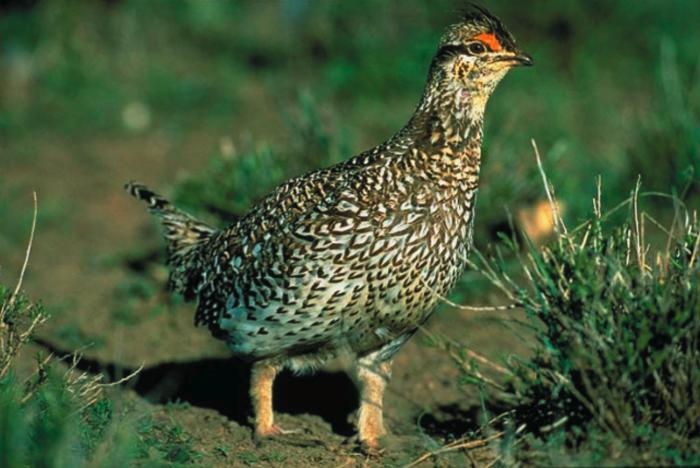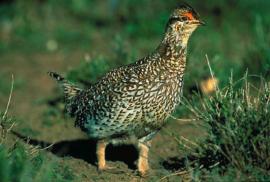Guide to Boreal Birds
Overview
The habitat requirements of this grouse are not as specialized as those of the prairie-chickens, and so this species has a wider range and has managed to survive in much larger numbers. The cutting of large areas of northern coniferous forest, which has created vast tracts of brushland, has helped the Sharp-tailed Grouse. Sharp-tails, like prairie-chickens and Sage Grouse, perform elaborate displays on communal mating grounds called leks, to which they return faithfully every year. In one case a homestead was built over a lek, and the grouse displayed on the farmhouse roof the following spring. The Sharp-tailed Grouse is also the official bird of Saskatchewan.
Description
15-20" (38-51 cm). Resembles, but slightly smaller than, female pheasant. Mottled with buff, slightly paler below. Tail short and pointed, with white outer tail feathers. Male has purple neck patch and yellow comb over eye; tail longer than that of female. Similar prairie-chickens are barred, not mottled, and show no white in tail.
Voice
During courtship, a low single or double cooing note.
Nesting
10-13 buff-brown eggs in a grass-lined depression in tall grass or brush.
Habitat
Grasslands, scrub forest, and arid sagebrush.
Range/Migration
Resident from Alaska east to Hudson Bay and south to Utah, northeastern New Mexico, and Michigan.



